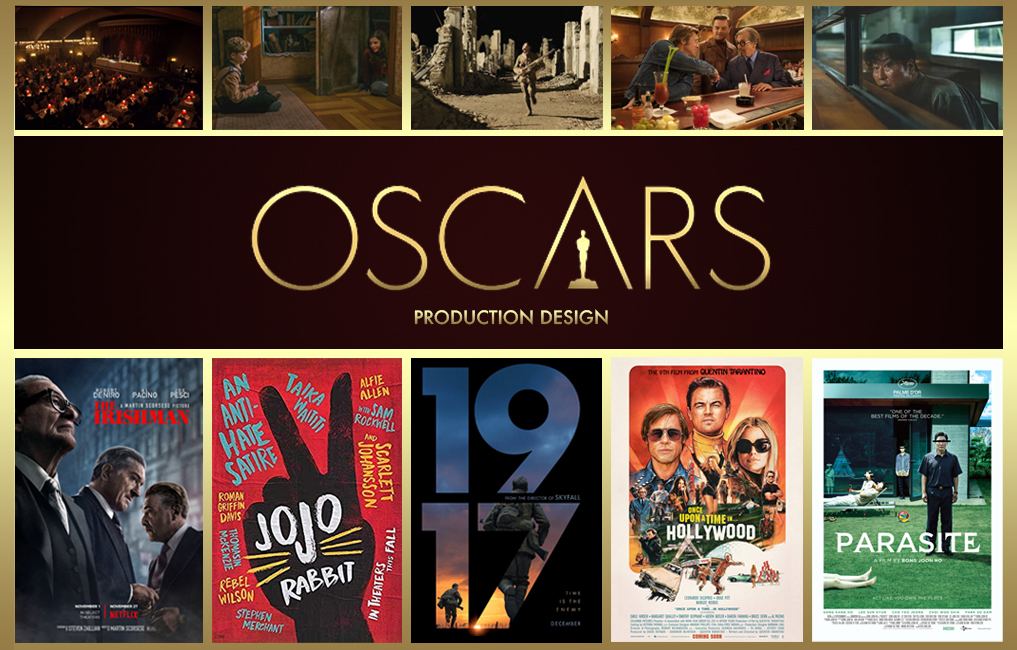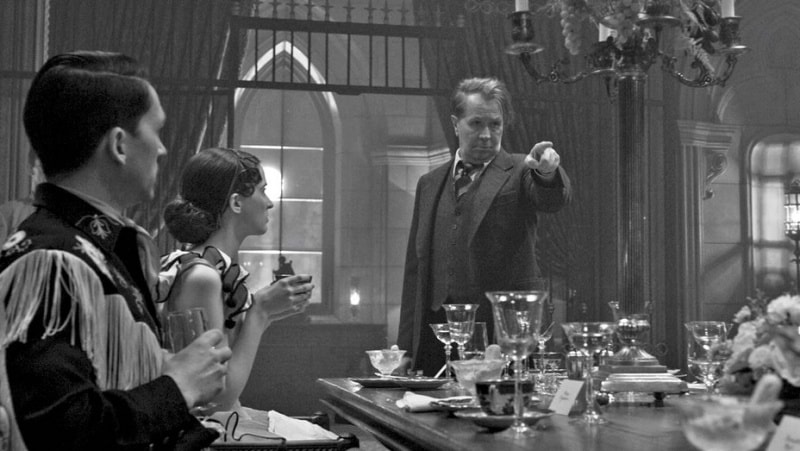Table Of Content
- Individuals with multiple wins
- ‘Shogun’ Is Over, But What About Season 2? Creators Justin Marks and Rachel Kondo Weigh In
- Best Production Designers of All Time
- Top Story
- Pauly Shore Says He “Was Up All Night Crying” After Richard Simmons Blasted Biopic
- Oscar Predictions – Best Production Design
- killed, including baby, as tornadoes slam the heartland

To see the ranked predictions for each individual category, visit Variety’s Oscars Hub. With an updo and bold, ruby lips painted by makeup artist Mary Greenwald using Byredo Lipstick in Red. With an intricately woven chignon styled by Marcus Francis using Better Not Younger and jewel-tone eyes done by makeup artist Sarah Uslan. Uslan prepped the Best Actress nominee with Currentbody's LED Neck and Dec Perfector red light mask. The news of rule and regulation changes also comes with another reminder after the 2025 Oscars date announcement to submit a RAISE form proving one’s film has met at least two out of four of the Academy’s inclusion standards in order to be eligible for Best Picture.
Individuals with multiple wins
With side-parted, sleek waves styled by Kim Gueldner using Better Not Younger products and nude lips done by makeup artist Mia Jones using Clé de Peau Radiant Liquid Rouge Matte in Cream Crush 101. With a turned-up lob and full brows created by makeup artist Rob Rumsey using Charlotte Tilbury Brow Cheat. With a freshly cut side-parted lob done by Gareth Bromell and styled with Hair Rituel by Sisley and rosy lips painted by makeup artist Mary Wiles using Charlotte Tilbury Pillow Talk lipstick. Before designing the trenches, Goldbeck spent a week with the art department doing what he calls earth studies.
‘Shogun’ Is Over, But What About Season 2? Creators Justin Marks and Rachel Kondo Weigh In
“We ended up with literally kilometers of carpet that Bev had printed to match the actual carpet that existed in the late ’60s and early ’70s,” the production designer tells us. What appealed to Martin was visually conveying the historical context amidst the explosion of youth culture during a very prosperous yet segregated ’50s America. The Poor Things team also took the Art Directors Guild’s Fantasy film award for production design last month and Oppenheimer took the ADG’s Period film award.
Best Production Designers of All Time
While designing the Metkayina landscape, production designers Dylan Cole and Ben Procter went through rigorous rounds of edits that fine-tuned every texture, from coral to fish skins to exotic jellyfish membranes. “Finding the balance between familiar and alien was a constant challenge,” says Cole, noting that if a film’s landscape is too far out there, the audience won’t find it recognizable or relatable. “We looked at everything through a National Geographic lens rather than a sci-fi fantasy lens.… It couldn’t just look cool, it had to make sense,” he added. The team then collaborated with Weta Workshop in New Zealand—along with master craftspeople and weavers—to make a 14-foot-tall “bigature” of the Sully home at Metkayina Village.
Production Design Will Be a Race Between Barbie and Poor Things - IndieWire
Production Design Will Be a Race Between Barbie and Poor Things.
Posted: Tue, 09 Jan 2024 08:00:00 GMT [source]
Production took over numerous soundstages at the Origo Studios in Budapest, where they built the complete worlds of London and Baxter’s house (in black-and-white), the ocean liner ship, the Paris square and brothel, and the Alexandria hotel and slums. For the city of Lisbon, they made composite sets on the largest sound stage in continental Europe at Korda Studios in Budapest. The production designer is responsible for the look of a film, which includes finding locations, designing and building sets, and running the art department. Although the name of this category has changed over the past nine-and-a-half decades, the general principle is the same, with this Oscar going both to a film’s production designer(s) and its set decorator(s). I’ve already written about this category essentially being between “Barbie” and “Poor Things,” but the best thing to do is keep an eye on the Art Directors Guild (ADG) Awards on Saturday, February 10. It’s one of the few precursors where “Barbie” and “Poor Things” are nominated in the same category (Best Fantasy Film Design).
Pauly Shore Says He “Was Up All Night Crying” After Richard Simmons Blasted Biopic
Murphy’s two “Elvis” collaborators, Beverley Dunn and Catherine Martin, already won this award together for “The Great Gatsby” in 2014. ” in 2002 after the two of them received their collective first nomination for “Romeo + Juliet” in 1997. Martin’s previous two wins in this category were paired with victories in Best Costume Design, and the same could apply this time.
“Babylon” has swept, but Catherine Martin has never won only one Oscar on a night. She’s typically won both production and costumes and is considered the favorite for “Elvis” in the latter category. Watch out for the triple-nominated woman or even “All Quiet on the Western Front,” which could hint at a possible best picture victory (but still, highly unlikely).

Oscar Predictions – Best Production Design
But to arrive on set ready to perform as Paolo, Leto had Lundströn apply his tour de force prosthetics elsewhere, hidden from the rest of the cast. I’m happy that the film is here, because the few buildings feel authentic, and the transportation to one hundred years ago is fully believable. The battlefield was built on a flat airfield that’s about the size of three football fields outside of Prague. Originally a flat piece of grassy land, the team took their shovels to it in January, digging through frozen earth. A “greens crew,” which eventually was dubbed the “Mud Crew,” then came in to re-cover every square inch of the battlefield with this concocted mud solution. The 350 running meters of trench, built with materials that would have been used in 1917, underwent a process of burning, sandblasting, foundation color, and a final patina that merged it all together—all topped with a layer of gloss that gave the walls an ever-damp look.
But today, we’re going to honor the great production designers of Hollywood by looking at every Academy Award for Best Production Design winner – then we’ll rank some of the best production designs of all-time. Before we rank the “best” Best Production Design winners, we’ll build a moodboard you can reference when in need of creative inspiration. Roll out that red carpet, don your fanciest glad rags, and pour that bubbly because Oscar season is upon us!
In addition to best director, Nolan was also nominated tonight for best adapted screenplay, which ultimately went to Cord Jefferson for "American Fiction." During his acceptance speech, Nolan thanked Universal Studios and the authors of the biography on which the movie is based, "American Prometheus," by Kai Bird and Martin J. Sherwin. Other nominees in the category included "American Fiction," "Anatomy of a Fall," "Barbie," "The Holdovers," "Killers of the Flower Moon," "Maestro," "Past Lives," "Poor Things" and "The Zone of Interest." "The Holdovers" star Da'Vine Joy Randolph and "Oppenheimer" star Robert Downey Jr. snagged wins in the supporting acting categories.
Yet there’s still hope for “House of Gucci,” “Dune,” or “The Eyes of Tammy Faye” taking the Oscar because they all boast complex transformations. In Ridley Scott’s “House of Gucci,” Oscar-nominated prosthetics designer Göran Lundströn (“Border”) got creative transforming the unrecognizable Jared Leto into the balding and chubby would-be fashion designer Paolo. He and his team of Anna Carin Lock and Frederic Aspiras did some reverse engineering to obliterate the look of the long-haired, thin actor (who wore a fat suit), with a three-piece bald cap, a wig, more than half a dozen prosthetic pieces, and a tweaked mustache.
James Price and Shona Heath, along with set decorator Zsuzsa Mihalek, was the production design team behind the Searchlight Pictures film. "The other night, I was panicking -- as you can see, happens a lot -- that maybe something like this could happen," she continued. There’s no denying that period piece movies have a better chance of winning the Academy Award for Best Production design than non-period piece movies do. But rather than recreate a contrived period, such as Victorian England, director David Lean often recreated obscure settings, such as the Burma Railway in The Bridge on the River Kwai, British Raj India in A Passage to India, and the Russian Revolution in Doctor Zhivago.
As for the residential ballroom that was supposedly the setting for the massive party scene inside Wallach’s mansion, the team added their gilded touch to the opulent Spanish Gothic foyer of the Ace Theater in downtown Los Angeles. This involved creating a massive pair of Gothic doors, multiple Gothic furnishings sourced from Belgium, custom tables that were manufactured to withstand the heavy stunt work, and an elaborate floor emblem inlay on tiled parquet floors for a final ode to opulence. “Damien wanted it to feel like the farthest-out design style that would make sense in the desert,” Martin noted. Set designer Paul Sonski drew up a lush paneled bedroom and hallway, anchored by a massive 100-year-old fireplace salvaged locally. “These were high-finish, difficult builds and took a huge amount of labor and passion to execute,” says Procter. “We needed soundstages in two cities to accommodate them.” And even in the human world, digital enhancement was necessary to complete these expansive environments for the screen.


No comments:
Post a Comment